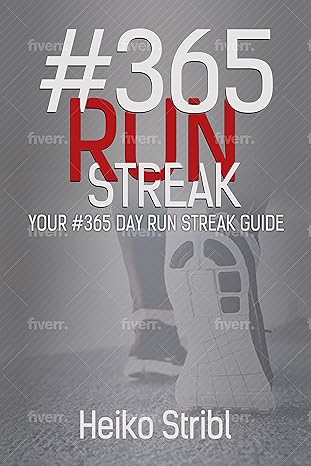Seldom is there such a feeling of achievement & satisfaction, as in finishing a track session. Don’t know what I am talking about? Then you have come to the right place, stay tuned to find out how the track is .. the place to become a better stronger aaaah but first the
and a smarter runner. Yes, I am Heiko, your host. Thank you for your time. So many shows you could be reading to, but somehow you decided to read this one, because you know the content makes you think, and if you apply it, helps you grow.
This is definitely the place for you, a runner that maybe wants to achieve your best 10K, your first or best Marathon, hey perhaps an excellent 800-meter time. What if you don’t even have a 800 meter time? What is up with that?
Or maybe you are that runner that struggles because you are an expert. An expert excuses maker. Ha Ha!

How can a show be suitable for both types? That is a good question, stay tuned it will make sense I promise.
For the last 35 years I have been running, training, coaching, conducting workshops and this (I have been quite fortunate), in many countries across the world. And whether it is running a 10K event in Spain or Singapore, participating in a 5K in Mexico or Malaysia, crux of the matter is, all runners have moments where we struggle to either get going, or to get the maximum out of our running. And that “thing” that “it” is the same in both cases.
And seeing this, you know the feeling, perhaps you experienced it yourself “sometime” you see an event or trail, and you realize THIS needs to be done. I need to sign up. I want to cross that finish line. And it is something.
Well this “something” that I saw in so many runners, I didn’t learn the solution in any coaching training or certification. Not one of the training courses went into the heart of the matter, the why some have SOMETHING and some don’t.
And I actually realized I had this figured out, or inside of me, for many years. Without getting too philosophical here. It was the love of running, the realization it never was a chore, or associated with frustration, and that’s what led to the creation of an extensive training to address the most important part of the body. The brain. That’s where the decision making process takes place. That is where the decision to binge on Netflix or strive for an improved run time happens.
No not the 3 weeks to stronger legs challenge, or the 7 easy steps to a power core for better running. Not that fancy ad for the newest energy drink, or that pair of runners sunglasses that all pro’s apparently wear
No, actually it is training your brain.
Many dreams of “I got to do this” are not achieved because someone, the dreamer never went out and DID it. Nothing new here, is it?
LoLEasier to talk about other people, isn’t it? Think about it: in light of your past achievements, future hopes and dreams and current abilities What is the smart thing to do right now? Today?. Where do you want to end up?
In the past, maybe: You had talked yourself into some limiting beliefs, and perhaps never ran further than a 21K. (You heard someone told you it is bad for the knees), or: You just focused on long slow runs.
You may also never ever go to a track to train. There is just something in your mind that is holding you back. You would be surprised at the number of excuses I have heard that runners don’t train on the track. Heck here where I live we have a beautiful track. Lush green grass, well maintained. Hardly ever meet other runners here.
Let’s dive into this a bit deeper.
Ever read a book, or readersed to a audiobook, a story: About those amazingly talented runners from Kenya, Ethiopia and then some runner from Europe goes there to learn or discover their secret.
Is it the diet, the altitude, no hang on it must be the genes, or the desire to escape hardships Ha ha sorry to burst your bubble. actually it is the same reason those Norwegian brothers are such great runners, or the British brothers excel at triathlon. The Norwegians, Henrik, Filip and Jakob Ingebrigtsen,
And the British triathlete.. Jonathan and Alistair Brownlee.
Spoiler-alert It is the attitude. Stop being caught in the chicken or egg scenario. The runners in Iten set their minds to become the best they can be. They realized their best is far more than they are currently doing and are not shy or scared to create a bigger vision for themselves. This vision then of course takes form, with a coach and training team that would help them get that expert advice they need to succeed on that top level. And of course the runners’ need to show progress.
And this “create a vision bigger than oneself”.. that can be scary. Actually, then you are doing it right. When was the last time you read something that scares you and the last time you did.
Sidenote: maybe you didn’t pick up on it buying the same wetsuit won’t make you swim as fast as Brownlee brother’s swim. Oblivious you say. Well, how come you think those shoes the Viking brothers wear will make you a better runner?
Now rather than setting a huge target, hey how about just plan to go to your local track. And start to run on it. Simple. The 400-meter circuit, a daunting place if you are not yet fond of it. Stick around to overcome your doubts, pet hates, dislikes, animosities, whatever it is that keeps and keeps you away from the track. If there is no track near you.
I sincerely doubt it.
If not, if you really are not ready for the track you can of course do an excellent online course. Let me sneak this one in
However, that is what you can learn on our online learning program, a mindset that will empower you to not only dream of newer distances and improved times. It will give your running a new lifeline, and help you enter each training with a mentally powerful resourceful state. Made by runners for runners’, it is the only one of its kind. Over 3 hours of video training, all there for the price of a pair of running shoes.
And to make sure that you don’t just sit in front of your online course because if you just read about running or brain training for that matter well, it is like that bucket of paint that is in my cellar. If I don’t apply it there is not much use, now let us move to today’s topic. The 400 meters.
Heiko I thought this show was about going further. Why do you want to talk about such a short distance, because you my dear readers most probably don’t like that distance? Hey, you know what, it is not my favorite distance either, but there are some valuable lessons to be learnt.
Having lived or traveled to over 50 countries I have gone for a run in all of them. And you know what. There is a track nearly everywhere where there is a school or some or another official park.
And if you really live somewhere where you don’t have access it is quite easy to find a 4 x 100-meter track equivalent.
Doesn’t need to be 4 x 100 meters, it can be a distance around an apartment complex. A 200-meter stretch that you run twice. Many options if you put your mind to it. Of course, no option if you are convinced that there is no option. So much for the power of negative thinking. Don’t laugh. I have had runners’ in a workshop that convinced me there is no track, nor a 400-meter substitute. Say no more.
But why is it that so many runners don’t train on a track? How come especially long-distance runners seem to avoid it? Even those in search of their fastest 5K do a lot of different training, but somehow stay far away from the 400 meters. I believe I have the answer lack of understanding which leads to thinking that it is boring.
Round and round I want to see different things, hear sounds, and feel different surfaces under my feet. Yes, freedom. And this “yes freedom” leads to many long slow runs. Which, of course, they count as a run. You invested the time. You went for your run. You did not do the best you could have done. You didn’t lay the foundation for an excellent run time.
And the moment you regret it, will be when you are participating in your race, be it a 5K fun run, a 10K hey even a trail run, and you realize, your time is going to be worse than what you achieved last year. And you need to settle for “well at least I participated”.
Got the medal, got the t-shirt, but you know you could have, should have done better. And part of that would have been completed by going to train on a track. It is as simple as that. Rhymes. Ha.
Boredom does seem to be the most obvious drawback when you look at the track as just a distance you want to cover. You need to bring time into the equation. Readers, I as a middle of the pack runner, have managed to run an exact timed marathon on a track. Yup a marathon that always means 42,2K, the 21K is called a half marathon, equals to 42,2 Km divided by 400 meters equals 105 laps. Or take this approach. If you start at 6:30 in the morning, and you want to run at a pace of just under 5 minutes per Km. Or a 10K pace of 49 minutes. Or a 6:28 mile. So yes, start at 6:30 and at 10:00 if you run in a town here in southern Germany, you will hear the church bells ring. As you cross the line.
No, you don’t need to run a marathon distance on a track, but it is doable, and serves a purpose that was the point I want to make. Oh, and you can read the whole story about how and what this came about. It is blog 2 of this blog catchy title too, winning a marathon.
Ok, but back to the track. The first point
How often should you go? Hey, just get going today. Stop making this out to be rocket science. Start today, even if your plan was a comfy 5K through the local park. No go today. (That by the way is how you overcome procrastination)
And now on a serious note to build a solid base, incorporate one to two track sessions per week. Yes, one or two per week.
The first few times you go there, just ease into running around the track. Develop a feel for it. Perhaps those shoes you usually wear are not so suitable. I actually prefer to wear a fancy pair of running shoes, bright red. When I go to the track, I feel like I have a better grip and my foot is closer to the ground.
Then you start off by getting accustomed to your 3K and 5K pace. Do some math on the average time of your last 3K or even 10K, and develop a feel for what speed it requires to achieve and hold that pace.
Then of course you will most probably have a goal, of a certain time you want to reach, perhaps improve your 10K to reach a sub 45 minute. Calculate, figure out what lap time and what pace you need to obtain. Hey and the math’s part is the favorite for all you lazy runners’. It is the part of exercise you do sitting at home but if someone wants to distract you “I cannot, I am working on my training”.. LOL
10 x 800 meters has a huge impact on your overall run time because it is a challenging distance. To perform it so that you are proud of yourself, you need a lot of concentration. The ability to focus under pressure. Running on a flat synthetic surface has many advantages. It is designed for speed work. Will help you learn how to pace.
Due to its bouncy nature the track will ensure you lift your knees a bit higher, giving you improved technique.Training in a group, faster time guaranteed.
But before you join a track remember don’t stop still especially not on the first two inside lanes. Lane 1 and 2. Also don’t stop suddenly.Always run anti clockwise.
Why is it that so many runners don’t like to do speed work? It is due to lack of information, or lack of knowledge. Sprinting when is the last time you sprinted? really flat out? How far did you run, before your lungs started burning legs clearly told you better stop this is it? Sprinting has a huge impact on your physique. So many muscles are full speed at work propelling you (if done correctly) and that ensures your body is as lean as can be.
But three main advantages the pro’s do agree on.
Stress relief
Perseverance
Discipline.
Sprint is an anaerobic exercise. Those fast-twitching fibers, increase size and strength Regular sprint training will make you a runner that can suddenly run faster and longer. It is a clear-cut formula.
If you want to lose some excess winter weight. The fastest way to go about it is you need to lose body mass, agreed? Of course, body mass includes fat and water weight. Fat is only burnt at an intensity between 50 – 65%.
2008 Apr; Metabolic adaptations to short-term high-intensity interval training: a little pain for a lot of gain?Martin J Gibala 1, Sean L McGee
High-intensity interval training (HIT) is a potent time-efficient strategy to induce numerous metabolic adaptations usually associated with traditional endurance training. As little as six sessions of HIT over 2 wk or a total of only approximately 15 min of very intense exercise (approximately 600 kJ), can increase skeletal muscle oxidative capacity and endurance performance and alter metabolic control during aerobic-based exercise.
Sprinting has cardiovascular benefits. Lowers blood pressure.
Sprints are a challenge. Most probably, if you do it right, you will have moments of uncertainty.
Yup, clever isn’t it? Make 365 days run, one whole year of running Why who or what would you want to do that? And if your first thought is “I couldn’t do that” then definitely you should get the book. The link to the video you know what.. just go to youtube, enter “heiko stribl” and concentrate or you will get sidetracked and end up somewhere you don’t want to be.
Life is too short for that.
And you know. There is such a powerful verse in the bible and you don’t need to be a Christian or a Christ follower hey especially if you are not. readers. Philippians 3:13
Brothers, I do not consider that I have made it my own. But one thing I do: forgetting what lies behind and straining forward to what lies ahead,
Imagine that we should STRAIN Forward.. Paul’s goal is perfection, but he has not reached it yet. He is not faultless, nor does he expect to achieve perfection before his death. Instead, he uses the analogy of a runner in a race to depict the motivation of his spiritual life. Like a dedicated runner, he has a single goal. Just as a runner cannot be successful unless they concentrate on the race, neither can Paul be successful growing in Christ if he allows other goals to interfere.
Continuing the running analogy, Paul also chooses to live by an important principle: keeping his attention on the road in front of him. A runner cannot look back and still focus on the goal ahead. The two ideas are mutually exclusive. A runner’s goal is to focus on the next step toward his or her goal. Paul’s spiritual life is the same. He will not look back to past steps, but focus on improving each step in his race until reaching the goal of being with Christ.
Christians can learn from the past, but we are not bound to the things we have done. Instead of being chained by our past mistakes, we can move forward, knowing that we carry Christ’s forgiveness.
If you want to learn more brain training related tools especially designed for runners, have a look at www.heikostribl.com, you can go back to your cell phone addiction and scroll scroll scroll ha.. Just kidding. No, not about the www.heikostribl.com part. Making you a better, stronger and smarter runner.
God bless my name is Heiko, and remember to take it easy.









